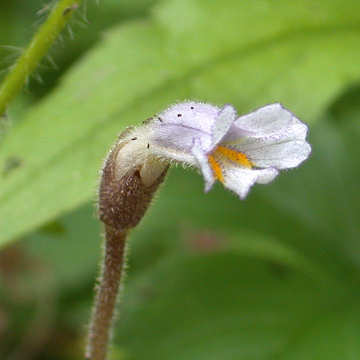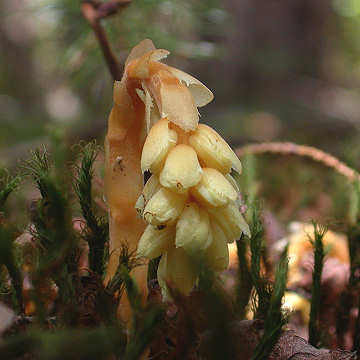While most plants are autotrophic (capturing energy directly from sunlight through photosynthesis), a few obtain energy by parasitizing fungi or other plants. Some are both autotrophic and parasitic and these are called hemiparasites. The following species are holoparasites that are completely dependent on their hosts. Those that parasitize fungi are called mycoheterotrophs.
The traditional circumscription of the family Orobanchaceae included only holoparasites. It now includes hemiparasites formerly treated as part of the Scrophulariaceae. The following three species are the former.
Squawroot (Conophilis americana) is a parasite of oaks.

Beechdrops (Epifagus virginiana) is a parasite of American Beech (Fagus grandifolia)

One-flowered Broomrape (Orobanche uniflora) is an annual that can parasitize a number of different herbaceous plant species

One genus in the family Orchidaceae is parasitic in Central NY. There are three species of Corallorhiza found here and the most common is Early Coralroot (Corallorhiza trifida)

The genus Monotropa in the family Ericaceae includes two mycoheterotrophic species that occur in CNY. Pinesap (M. hypopithys) is found in acid woodlands under pines.

Indian Pipe (Monotropa uniflora) is more common and occurs in a variety of forested habitats. It differs from Pinesap in producing one flower per flowering stalk.

One species in the family Santalaceae is found in CNY. Eastern Dwarf Mistletoe (Arceuthobium pusillum) differs from the other species covered here in that the seeds germinate directly on the host. It is found almost exclusively on Black Spruce (Picea marina) in acid swamps and bogs.

The last group of plants are vines in the Morning Glory Family (Convolvulaceae). Dodders are annual vines that begin life underground but soon lose contact with the soil. The thin twining stems wrap around the stems of other plants, appearing like tangles of orange threads. There are a few species, the most common being Cuscuta gronovii

Flowers are produced beginning in July
